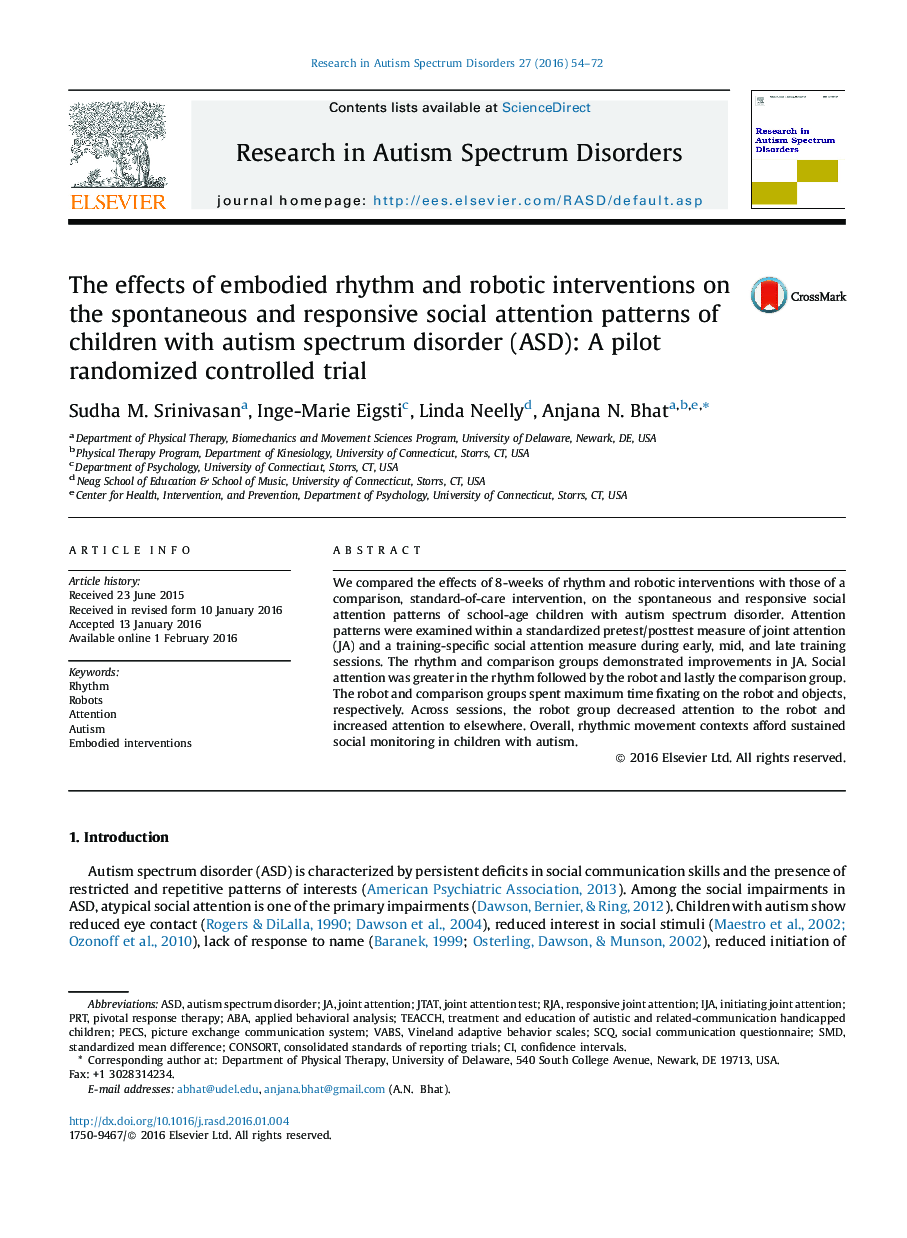| Article ID | Journal | Published Year | Pages | File Type |
|---|---|---|---|---|
| 369923 | Research in Autism Spectrum Disorders | 2016 | 19 Pages |
•Effects of rhythm and robotic interventions on attention patterns in autism were assessed.•Rhythm and comparison groups showed improvements in responsive joint attention.•Social attention was greatest in the rhythm group.•Robot group showed progressive boredom with the activities across weeks.•Comparison group directed greatest attention towards objects/training supplies.
We compared the effects of 8-weeks of rhythm and robotic interventions with those of a comparison, standard-of-care intervention, on the spontaneous and responsive social attention patterns of school-age children with autism spectrum disorder. Attention patterns were examined within a standardized pretest/posttest measure of joint attention (JA) and a training-specific social attention measure during early, mid, and late training sessions. The rhythm and comparison groups demonstrated improvements in JA. Social attention was greater in the rhythm followed by the robot and lastly the comparison group. The robot and comparison groups spent maximum time fixating on the robot and objects, respectively. Across sessions, the robot group decreased attention to the robot and increased attention to elsewhere. Overall, rhythmic movement contexts afford sustained social monitoring in children with autism.
